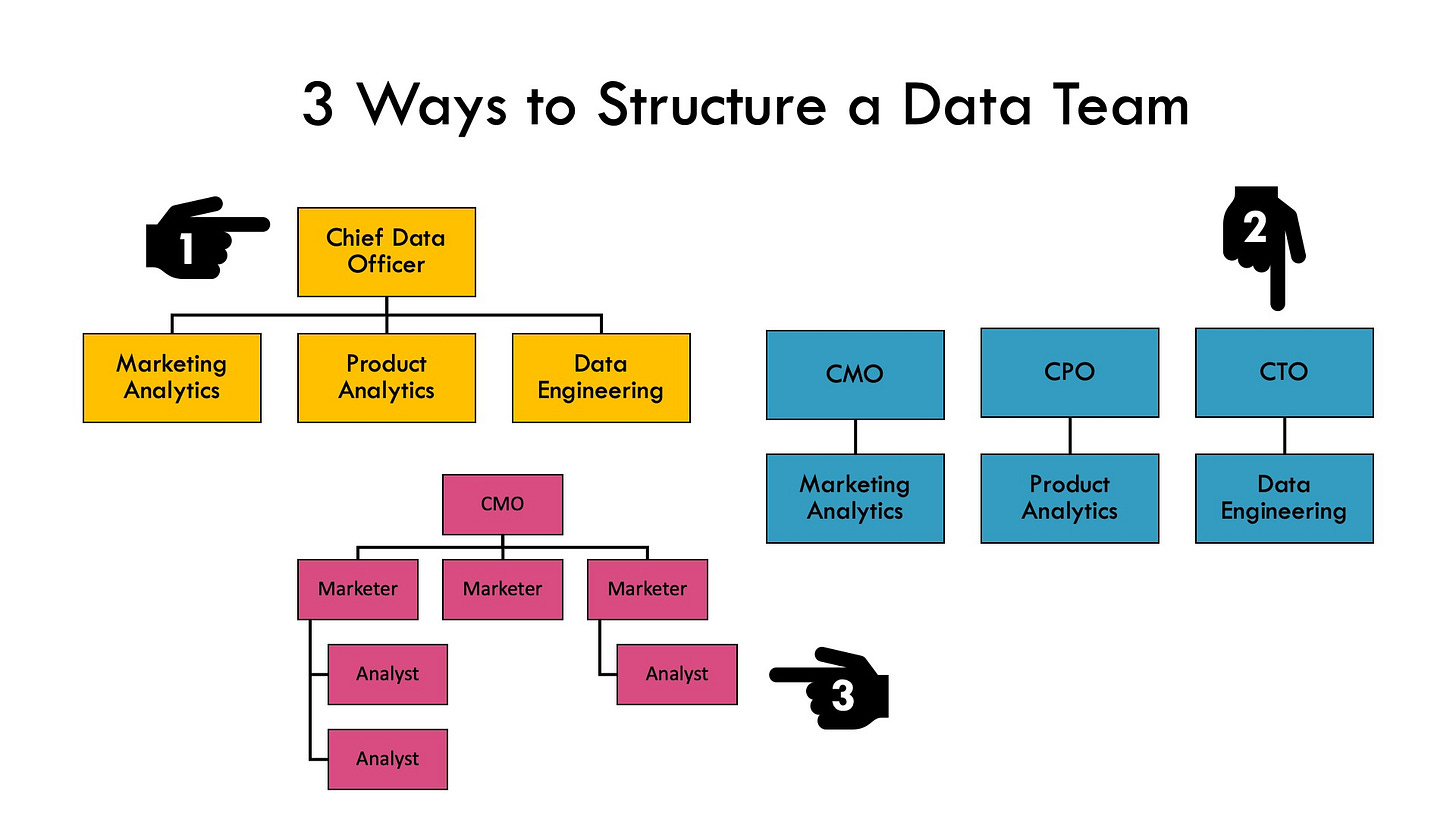3 Ways to Structure a Data Team
Exploring the advantages and challenges of various team structures.
When a data team is small, with only a few people, everyone tends to wear multiple hats. However, as the team grows, it develops pockets of specialized expertise. The challenge then becomes fitting all the pieces together in a sensible way. Here are three common structures I’ve seen for data teams:
1. Centralized
In my opinion, this is the ideal option. In a centralized structure, there is a Chief Data Officer (CDO), with specialized data groups reporting into that function, representing all the data needs of the company. This structure can be quite effective. Although this is an extremely simplified view, I believe these three core data functions are always present in a business model: marketing analytics, product analytics, and data engineering. Depending on the company, you likely have other specialized functions as well, such as content analytics or sales analytics. All of these teams report to the CDO, who represents the analytics and data science needs of the entire business.
2. Domain-Split
In this approach, there is no CDO. Instead, each specialized team reports to its main stakeholder group. The marketing analytics team reports to the Chief Marketing Officer (CMO), the product analytics team reports to the Chief Product Officer (CPO), and data engineering reports to the Chief Technology Officer (CTO). This model has its advantages and disadvantages. Reporting to main stakeholders brings teams closer to the business, which can be quite valuable. However, it requires more effort to share knowledge and best practices across different functions. This sharing of resources and efficient operations is one of the main benefits of the centralized approach described above.
3. Decentralized
The decentralized model presents the most challenges, and I do not recommend it, although I see it in the wild often enough to mention it. In this structure, there is no center of gravity. Instead of groups, there are individuals or very small teams. For example, you might have an analyst or two reporting to a marketer. Each marketer is their immediate stakeholder, but there is no cohesion among the analysts. These analysts all report to the CMO, who likely has extremely limited visibility into the value the analysts generate. When I see this, I hope it is a transitional state to one of the other models, which I believe are much more effective.
Evolution Over Time
Org structure is not a one-time decision. Instead, it must adapt and evolve over time. Data leaders should continue to assess and refine the structure to ensure it aligns with business needs. If it doesn’t, it should change.
Through my simple examples, I hope I’ve been able to convey the point that there are multiple ways to organize data teams within a company. Ultimately, you should strive for a structure that best helps your business and your customers.


